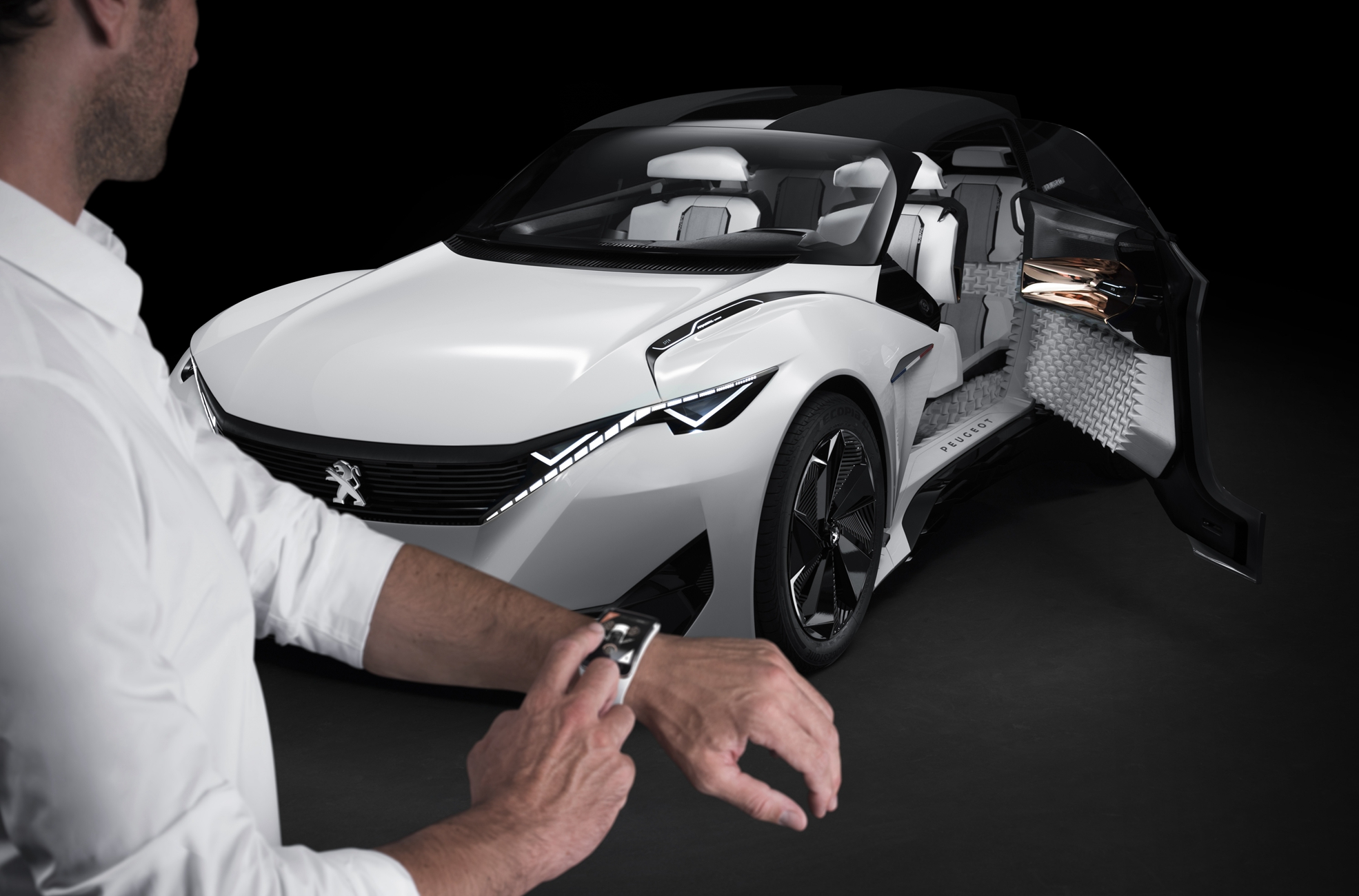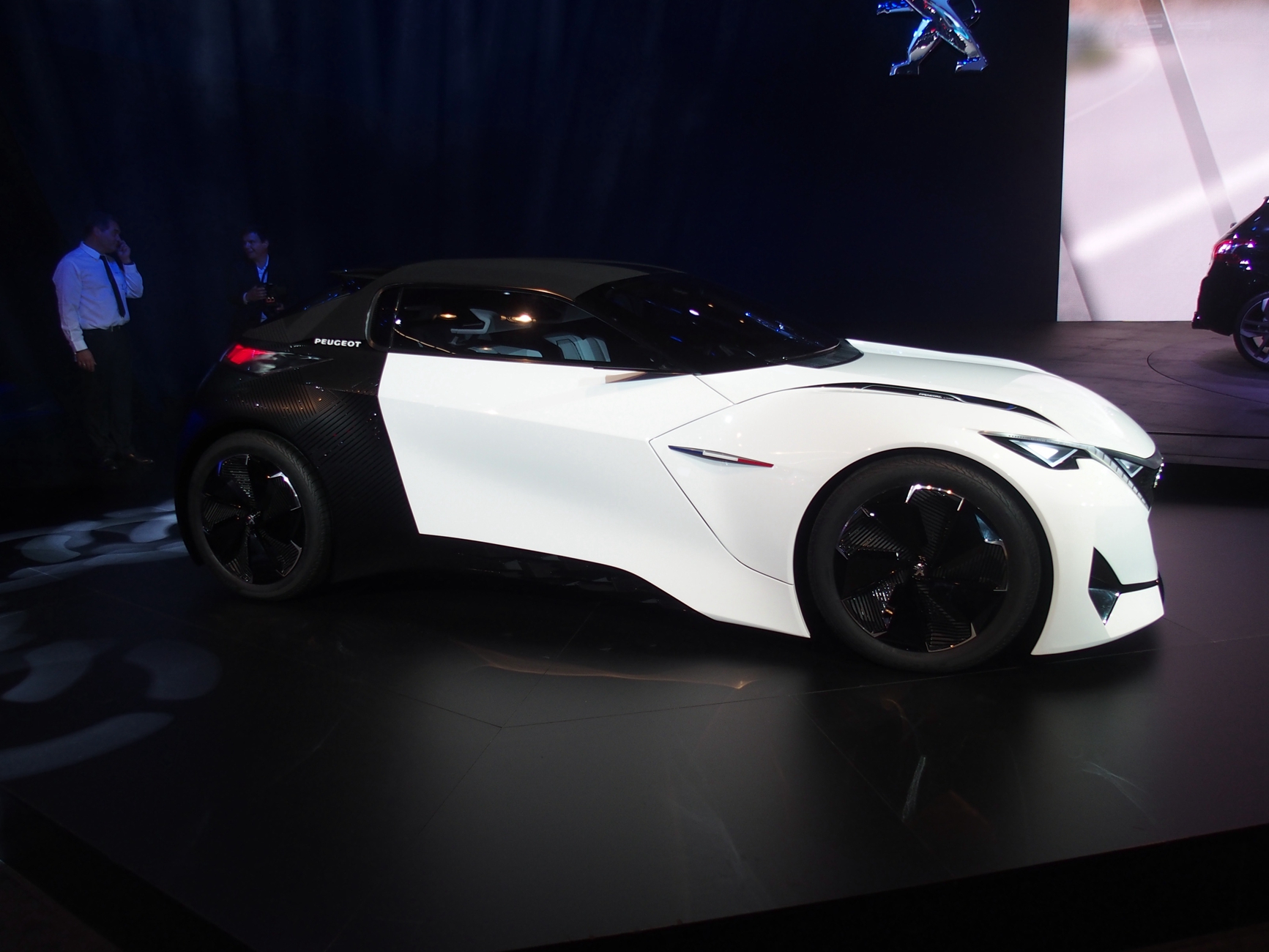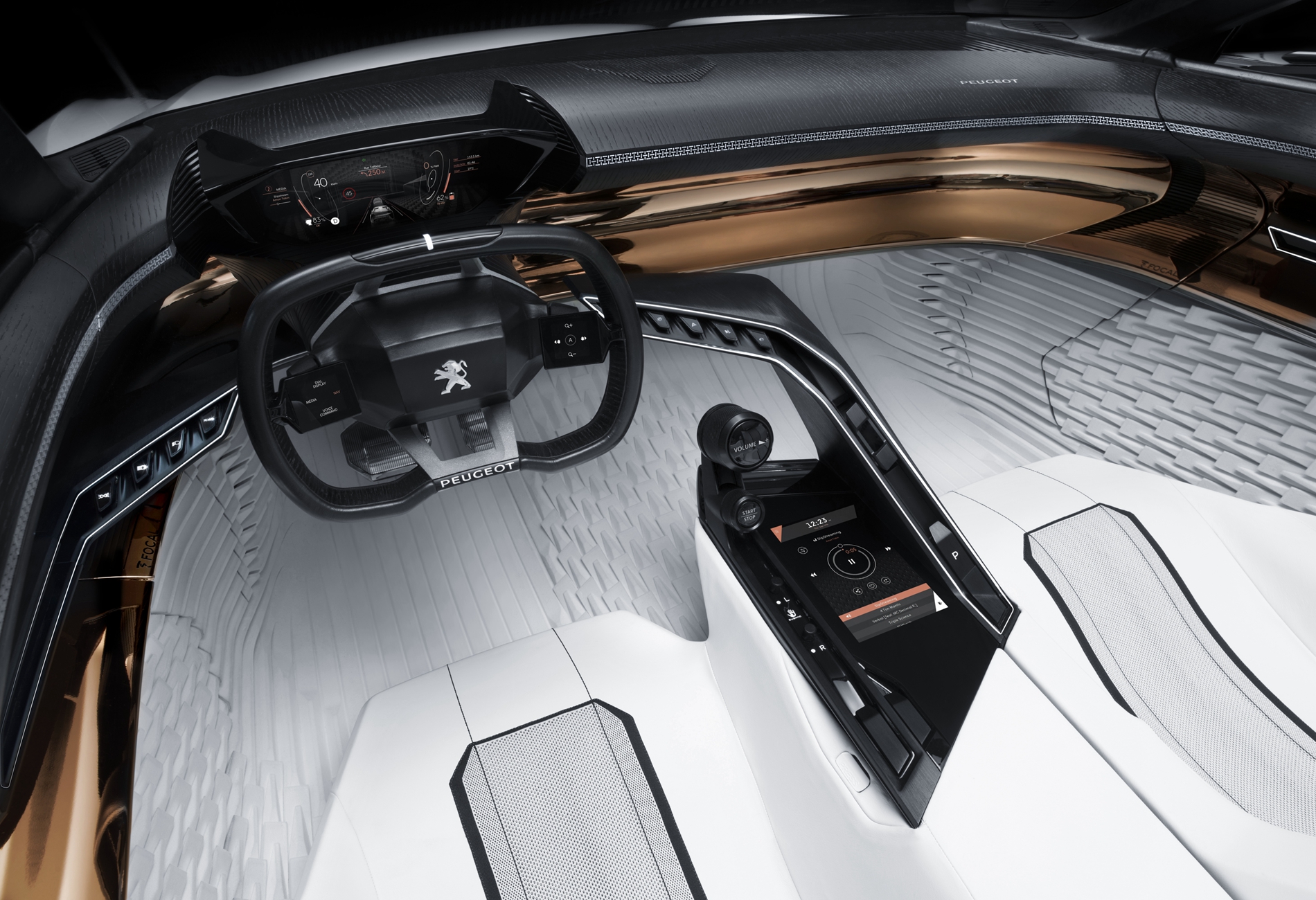 标致Fractal概念车可能使用智能手表锁定汽车并触发“声音签名(Sound Signature)”
标致Fractal概念车可能使用智能手表锁定汽车并触发“声音签名(Sound Signature)” Fractal是一款电动城市双门轿车,并配备了标致最新一代的i-Cockpit内饰系统并整合了声音系统。
Fractal是一款电动城市双门轿车,并配备了标致最新一代的i-Cockpit内饰系统并整合了声音系统。 超过80%的Fractal系统内饰都使用3D打印生产。
超过80%的Fractal系统内饰都使用3D打印生产。
2010年,标致使用SR1概念车向公众展示了它全新的i-Cockpit触屏系统,该系统可对加热、通风、导航、音响、网络连接和路线计算等功能进行控制。第一代系统于2012年正式用于量产车型标致208,而在2015年法兰克福车展上,标致在Fractal 电动城市轿跑概念车中展示了新一代i-Cockpit系统,而这次的重点在于声音。
这辆车拥有专属的“声音签名”——是由DJ兼声音设计师Amon Tobin创造的。当驾驶员用智能手表远程锁定系统开启车辆时,该系统会自动启动。“电动汽车不是什么新概念,但它有一个问题,那就是它不发声,”标致概念车与高级系统主任Matthias Hossann解释道。
“在法国,如果你说你驾驶的是电动汽车,有的人还会为你可惜,因为他们认为驾驶起来不够刺激。我们思考了一下这个问题,觉得驾驶电动汽车的确会因为没有声音而缺乏一定乐趣。我自己也深有感受,因为就连启动的时候,你都不知道是不是真的发动了。”
标致的设计团队认为,声音是传统驾驶体验的一部分,可以告诉驾驶员速度等信息。“我们认为,通过开发出某些特定的声音,我们可以唤起相应的情感、驾驶乐趣,并提高驾驶的精确度,” Hossann表示。
因此,标致为Fractal专门开发了一些声音。“GPS是一个很好的例子,” Hossann继续说道。很多人都曾体验过在一条拥挤的道路上错过转弯的问题,尽管导航系统的确给出了提示,但这一问题仍有可能发生。为解决这一问题,Fractal的设计师们使用了方向声音技术。“我们认为可以让某些声音从一个方向(比如右边)传过来,提醒驾驶员在300米后向右转,再加上另外一些从右边来的声音,这样驾驶体验会更好。”
标致设计团队从项目一开始就和Tobin合作了。“我们与他分享了设计流程,并讨论了工艺、材料、形状和声音等问题,”其中包括转向提示音和警告音等功能性声音,Hossann表示。
除了展示电动汽车上可以使用某些功能性声音这一理念之外,这个项目还有一个更实际的用途。欧盟规定,2019年起卖出的所有电动汽车都必须在速度到达30 km/h (19 mph)的时候发出警告行人的声音。
标致团队认为这是一个为标致电动车开发一套专用声音效果的机会。不仅如此,Fractal的设计团队还将购车人的其他价值评判标准也考虑在内,如关门声的质量。“这也是我们为什么在这辆车上专门开发了开关门的声音,” Hossann表示。
设计师们还考虑到了车辆的个性化需求。“现在的车辆个性化主要是增加些标贴或车身用漆之类的东西。而在未来,你甚至可以像手机一样使用自己的声音,如开门声。”
声音还被用于车内设计的检测。“最好的舱内形状应该是不会产生回声的。我们并不是画几根线,看上去对就行了,我们采用的是参数设计方法。” Hossann。“我们通过特定算法来定义形状,这是一种思考事物的新方法。而且这个形状是无法通过冲压,碳纤维或注射制模等工艺制成的。”
Hossann指着车门板介绍道:“这就是为什么我们使用大量3D打印技术的原因。车内80%的内饰是用3D打印方法制造出来的。当然因为这是一辆概念车,所以才能这么做,但我们的确相信这个技术会改变未来的汽车行业。”
“在目前这个阶段,我们还很难预测3D打印的生产速度和产量,” Hossann表示,“但对于像装饰品一类的小东西来说,你可以想象,未来消费者如果希望在某个地方增加点装饰,那么他就可以去经销商那里打印出来并装在车上。
“我们像传统设计师一样设计这辆车,但我们几乎设计了整个思考方式。我们对思考事物和研发的方法进行了一番大讨论。在一辆传统的汽车上,为了达到一定的隔音效果,就必须在门板上加点泡沫。而在未来,我们可以设计出效率更高的车身形状,这样就不用添加隔音材料,还能起到减重的效果。”
作者:John Kendall
来源:SAE《汽车工程杂志》
翻译:SAE上海办公室
Peugeot Fractal demonstrates a new take on sound design
Peugeot used the 2010 SR1 concept to introduce its i-Cockpit touchscreen-based system, designed to control heating and ventilation, navigation, audio, connectivity, and the trip computer. The first-gen system entered production in the 2012 Peugeot 208. The company took the i-Cockpit concept one stage further in the Fractal electric urban coupe concept at the 2015 IAA Frankfurt Show, to include sound.
The concept plays a “sound signature”, created by DJ and sound designer Amon Tobin, which is triggered when the driver opens the car using the smart watch remote locking system. “Behind this concept of an electric car—that is not really new, there was this question that electric cars emit no sound”, explains Matthias Hossann, Head of Concept Cars and Advanced Design at Peugeot.
“In France, sometimes if you say you are driving an electric car, people say they are very sorry for you because they think it is not as exciting to drive an electric car. We thought about that and agree that you lack some pleasure with an electric car because it emits no sound. I have had this experience because even when you start an electric car, you don’t know that it has started.”
The Peugeot design team’s thinking was that sound is part of the conventional driving experience, giving the driver an indication of speed, for instance. “We think that by developing some specific sounds, we can generate some specific emotions, some specific driving pleasure and also a more precise driving experience”, explains Hossann.
As a result, Peugeot has developed some more specialized sounds for the Fractal. “The best example is the GPS," continued Hossann. Most of us have had the experience on a busy road of missing a turn even though the navigation system has given the instruction. The Fractal designers have used directional sound to help. “We think that by developing some sounds that come from one side, for example the right, with a command to turn right in 300 m, followed by some other sound from the right, will give a better driving experience.”
The Peugeot design team has worked with Tobin since the beginning of the project to design specific sounds. “We have shared the design process with him, we have discussed process, material, shape, and sound,” said Hossann. All the functional sounds such as the turning indicators and warning sounds.
As well as presenting the possibility of designing an EV with specific functional sounds, there could be a practical application. All electric cars sold in the European Union from 2019 will be required to make a sound at speeds up to 30 km/h (19 mph) to warn pedestrians of their presence.
The Peugeot team thinks this could be an opportunity to develop a specific sound signature for Peugeot electric cars. In addition, the Fractal design team has tapped into other value judgments that car buyers make about cars, such as the quality of the sound of the door when it closes. “That is why, for example on this car we have developed a sound for opening and closing the doors,” said Hossann.
The designers also considered current personalization of cars, “Personalization today is a lot of adding things like stickers and paint. Tomorrow, you could have the same body, but just personalize the sound like a smartphone such as the door opening.”
Sound has also been used to determine interior design features. “The best shape is an anechoic chamber. In fact we work with parametric design. We don’t design just by drawing every line and making it look right,” said Hossann. "We just work with an algorithm. We define a shape—it’s a new way of conceiving things. This shape is impossible to produce by stamping, or with carbon fiber, or injection molding,”
Hossann pointed to the inner door panel: “That’s why we use a lot of 3D printing. More than 80% of the interior of the car is produced by 3D printing. Again this is possible because it is a concept car, but it’s something that we believe could change the car industry in fact.”
“At this stage it’s difficult to have the speed and the volume”, said Hossann, “But for example for small items like some décor, you can imagine in the future a customer might be able to choose a specific area where they can add some specific décor and have this printed at the dealer and fitted to the car.
“We designed the car like a classical designer, but we almost designed the way of thinking about our car. We had a big discussion about the way of thinking about things and developing them. On a classical car you have a door panel, you add some foam to make the car more soundproof inside. Tomorrow we can imagine having an efficient shape for sound so that you don’t need to add soundproofing material, so you can save weight.”
Author: John Kendall
Source: SAE Automotive Engineering Magazine
等级
打分
- 2分
- 4分
- 6分
- 8分
- 10分
平均分
